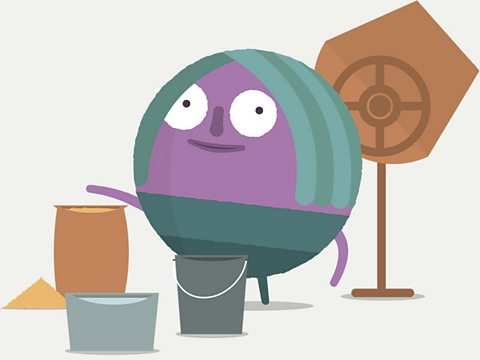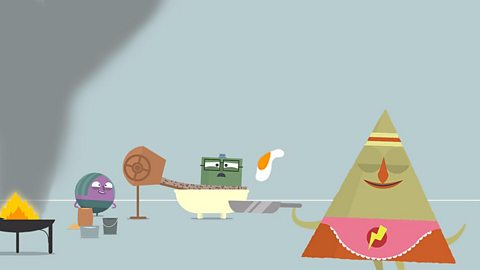Watch: Separating a mixture
Discover how the process of separation works.
Ways of separating substances

sievingA way of separating solid substances using a mesh called a sieve, which allows the smallest particles to pass through, but not the largest particles
A mixture made of solid particles of different sizes, for example sand and gravel, can be separated by sieving.
Filtering A way of separating particles of a solid (e.g. sand) from a liquid (e.g. water).
You can separate a mixture of sand and water by passing it through a piece of filter paperA type of paper which allows pure liquids and solutions to pass through, but prevents particles of insoluble solid from passing through.. The water is able to pass through the tiny gaps in the paper but the sand particles are too big and are left on the surface of the filter paper.
evaporatingWhen a liquid turns into a gas slowly, at temperatures below the boiling point.
By dissolving salt in water you make a solution. You can separate the salt from the water again by boiling the solution. The water will evaporate until it is all gone. The salt will be left behind.

Activity 1: Identifying ways to separate
Activity 2: Quiz
Activity 3: Separating substances

- Mix up some dried rice with some sugar or salt.
- Now use a sieve to separate out the two different foods.

Can you explain why sieving separates the two substances?
You can use a sieve because the grains of rice will stay in the sieve but the sugar and salt grains are small enough to pass through the sieve.
Why it wouldn’t work to separate salt and sugar from each other?
A sieve wouldn't separate salt and sugar as both are small enough to pass through a sieve.
Why can’t you separate the salt from salty water using filter paper?
A solution (e.g. salty water) will go straight through a filter paper.
Bitesize Primary games. gameBitesize Primary games
Play fun and educational primary games in science, maths, English, history, geography, art, computing and modern languages.

More on Properties and change of materials
Find out more by working through a topic
- count3 of 5

- count4 of 5

- count5 of 5

- count1 of 5
